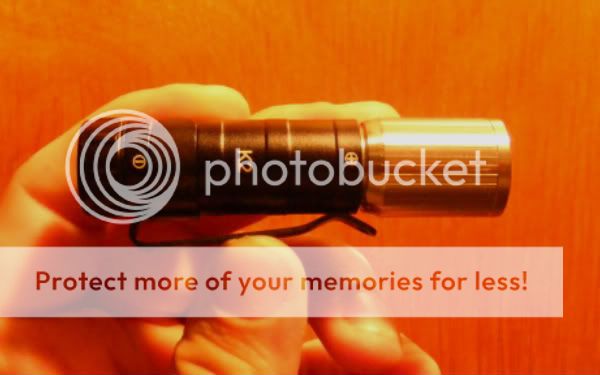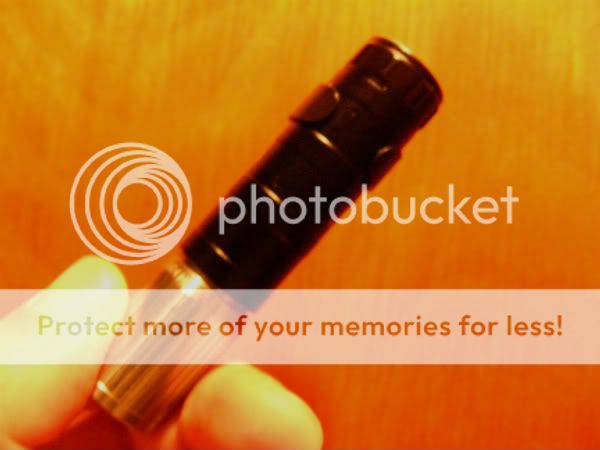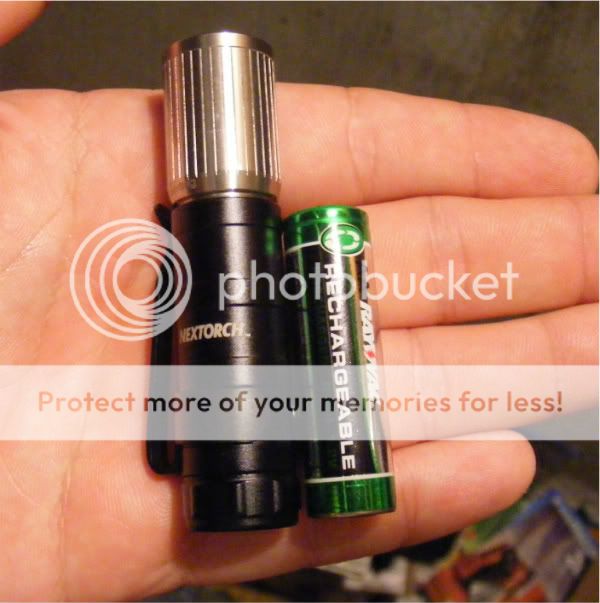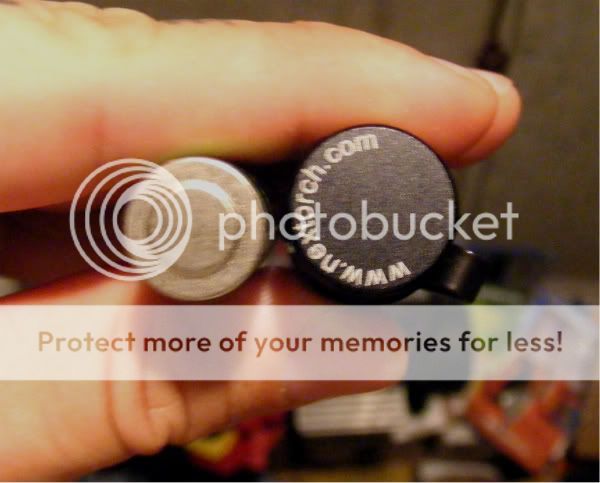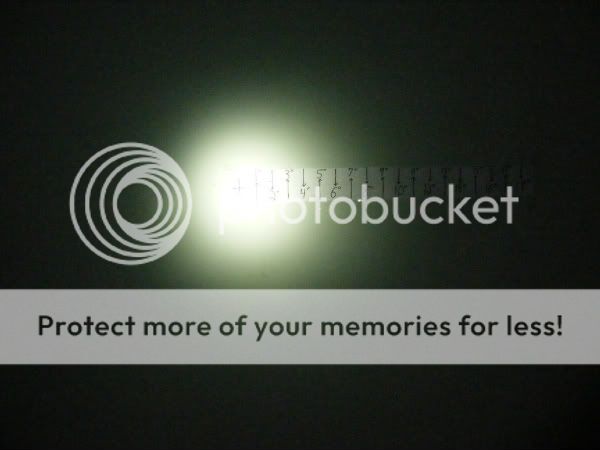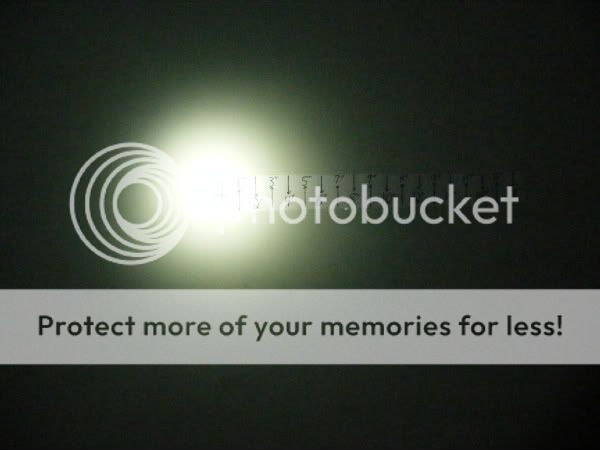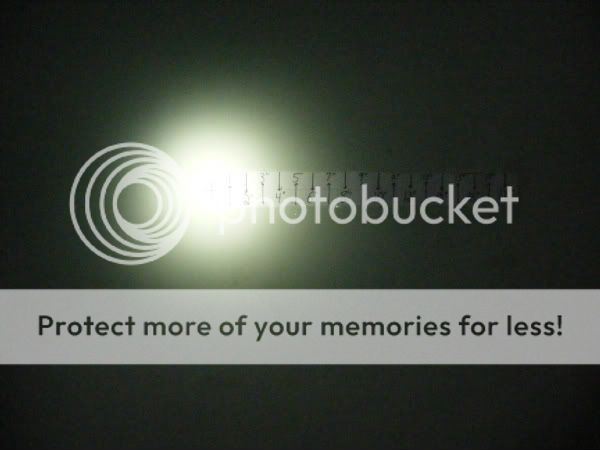For submission in the reviews forum.
NEXTORCH K2 - Review
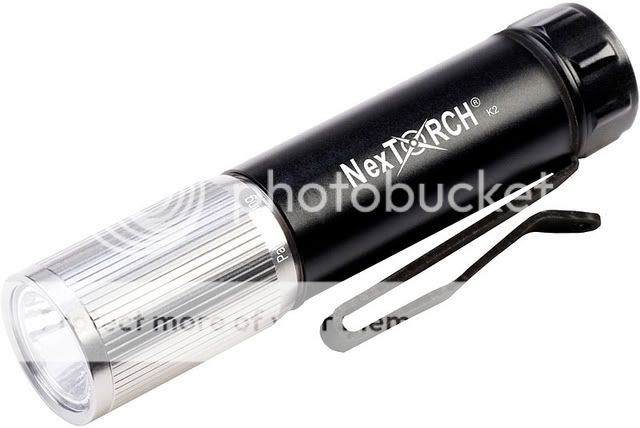
MANUFACTURER SPECIFICATIONS
SSC-P4 LED (50,000 hour lifespan)
Battery: 1 x AA (NiMH, Alkaline)
Dimensions
-Length: 79 mm
-Diameter: 18 mm
-Weight: 32 grams (excluding batteries)
- Digitally-regulated circuit maintains constant brightness
- Refined Stainless Steel head (303)
- Pocket Clip
- Aerospace grade aluminum (6061-T6)
- Hard Anodized finish
- Patented anti-roll design
- Acrylic lens material
- IPX-7 waterproof

Output Modes (5)
-100%: 65 lumens, 90 minutes
-50%: 30 lumens, 270 minutes
-10%: 7 lumens, 900 minutes
-Low: 4 lumens, 245 hours
-Strobe: 180 minutes
-SOS: 180 minutes
-60 m beam distance
Retail price: $20
Package:
The NexTorch K2 came packaged with a short manual and a Nextorch AA battery. There are no included accessories that come separate from the light as the pocket clip is already attached and there are no holes on the body for the attachment of lanyards. There is, however, a small hole on the tip of the clip which can be used to attach a lanyard if you really need to attach one.
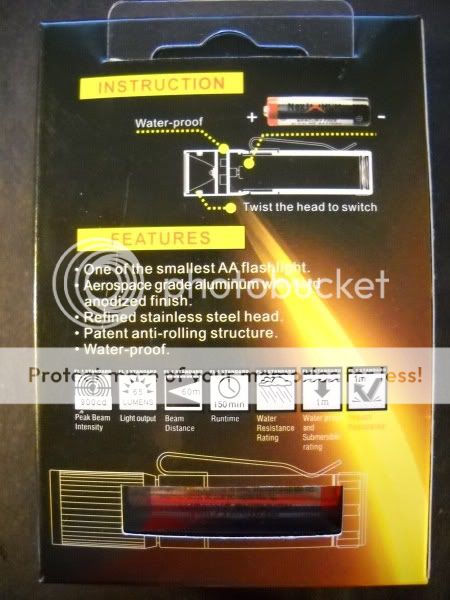
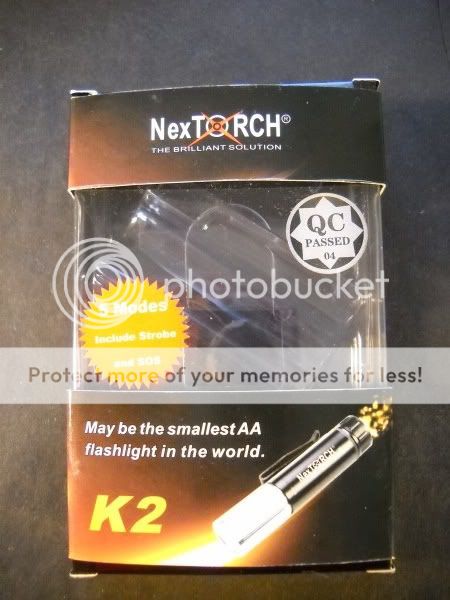
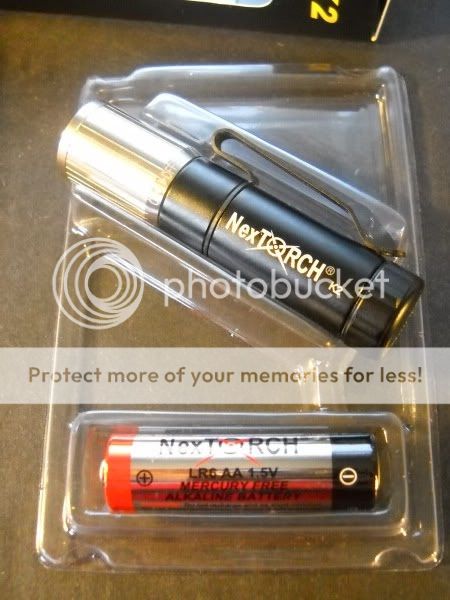
Design and Form Factor:
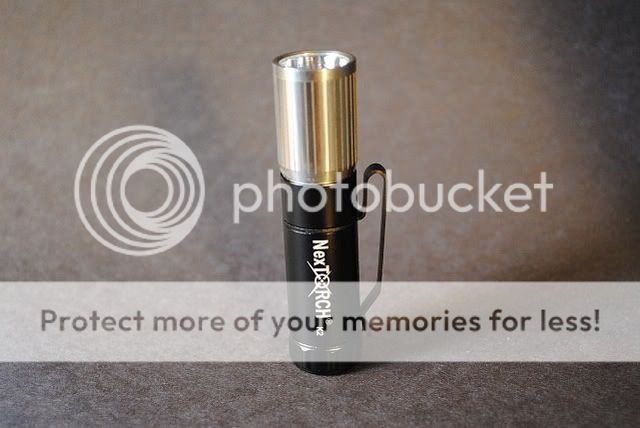
NexTorch publicizes the K2 as the "smallest single AA flashlight" that is currently available and this is what it's selling point is most likely going to be for most people. It is indeed very small, almost as large as the one AA battery that it uses. It's nearly impossible to verify that this flashlight is the smallest AA flashlight available, but it comes very close in size to the NiteCore EZAA which is slightly longer yet slightly more narrow. The K2 is approximately 79 mm long ( compared to 83mm on the NiteCore) and is 18mm wide (compared to 16.5 mm on the NiteCore). It is much smaller than the comparable 1xAA lights made by Sunwayman, Dereelight, and Fenix.
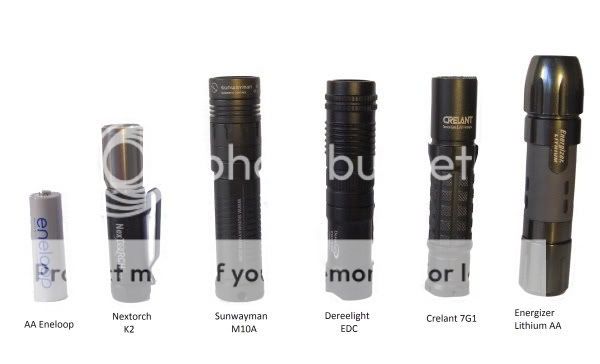
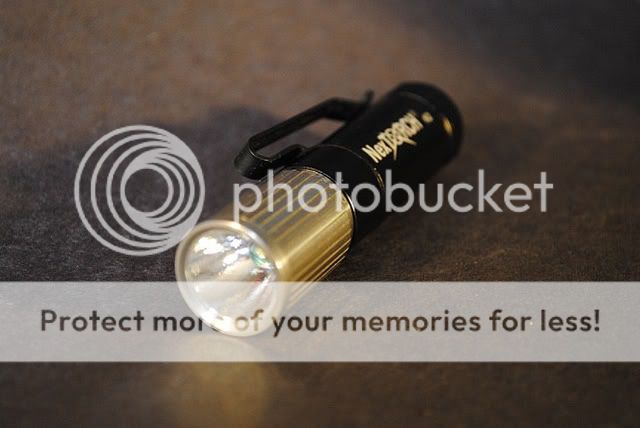
The aluminum body seems to be good quality and the anodizing as well.
(The clip cannot be removed.)
The entire body of the NexTorch K2 is made from aluminum and it has a very smooth surface. There is no knurling along the body itself, but there are some grooves on the head which are helpful for turning the flashlight on and off (this light is a "twisty" and turns on by rotating the head like a mini-maglite. It does not have a switch, perhaps one of the design requirements for it to be so short in length.)
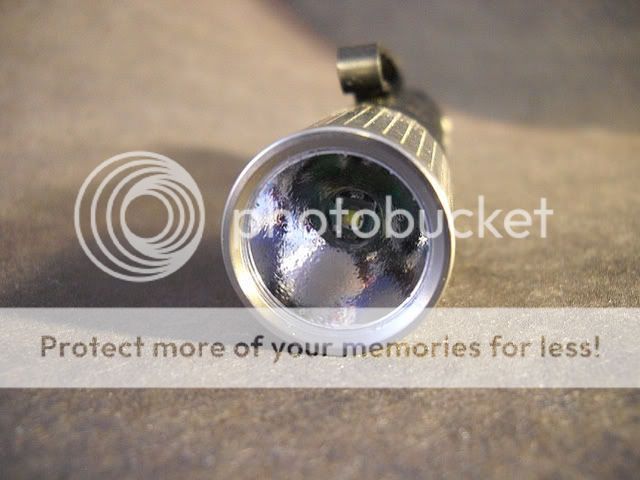
I would say that the grip on the head of the light is not the best, as my fingers do tend to slip when changing modes and turning the flashlight on and off. It also seems that the threads are fairly stiff between the head and the body. Despite this, I am still able to operate the flashlight easily with the use of 2 hands, although it's not so easy to do so with one. This is because there is not much grip on the head and because the threads, at least on mine, are quite stiff and not easily turned. This may be because they are either too rough or because they don't have enough lubricant.
Head and Reflector:
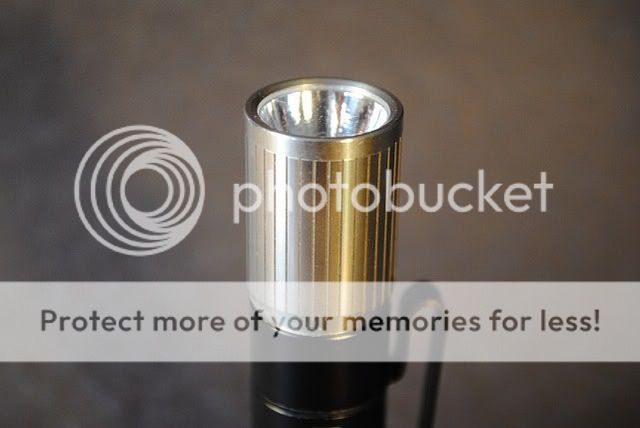
The head of the K2 is approximately the same diameter as the rest of the body. There is a very slight increase in diameter where the reflector is housed, but this only about 1mm or so. The reflector itself is a very slight orange-peel texture and the light has more throw than I thought it would have for such a small light.
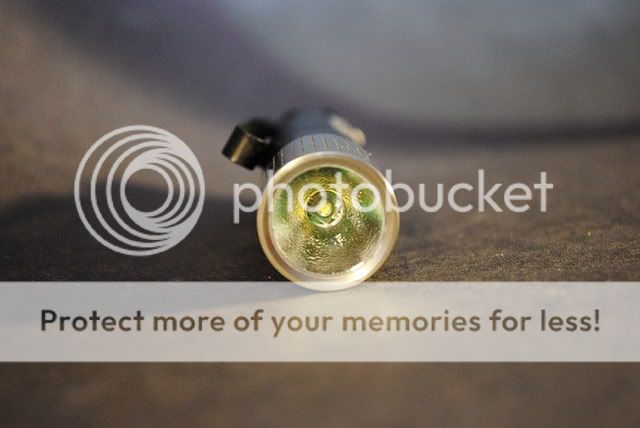
The NexTorch K2 uses an SSC-P4 led which is pure white, providing 65 lumens on its highest mode. The LED is not neutral white, but also would not be described as cool white since it is noticeably warmer than the Q5 emitter on a Fenix L2D. The beam is surprisingly quite focused, with a very distinct hotspot surrounded by an even circle of brightness all the way out to the outer edge of the beam. It is not a flood-type light which seems to be more common in the 1xAA format.
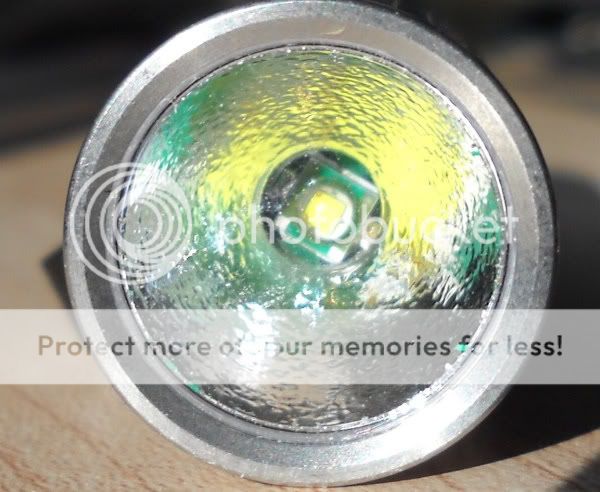
Projected on a white wall, the beam contains no artifacts whatsoever and there are no dark spots in the center even at minimal (10cm) distances.
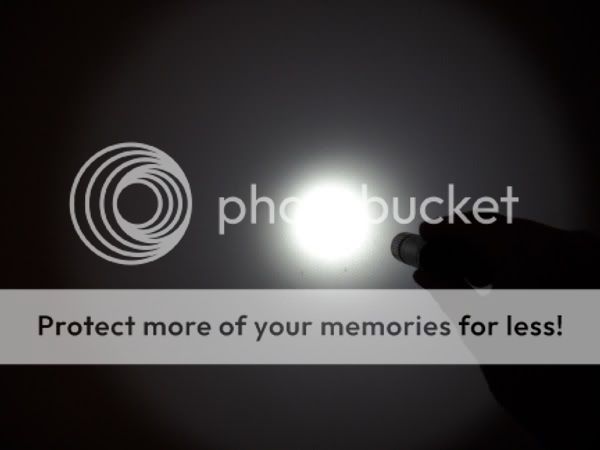
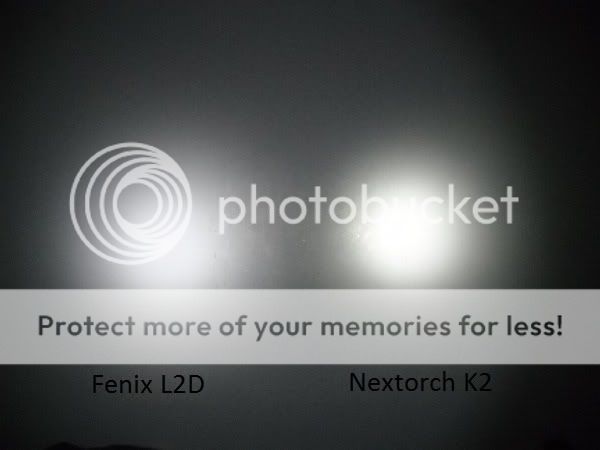
User Interface:
The user interface of the NexTorch K2 flashlight is very simple to use and to get used to. It is turned on and off by simply rotating the bezel counterclockwise for on, and clockwise for off. (when viewed from below looking up) The modes are changed by quickly turning the light off and then on again. The sequence of the modes is highà mediumàlowàstrobeàSOS. Important to note is that this is the same sequence which the flashlight will always follow. It always turns on at the highest mode and progresses through the different modes the same way each time, in the order described above. Once you reach the SOS mode, the next mode will be high once again and then the sequence is repeated. This is one area of the flashlight which I was slightly disappointed with. While some kind of memory would have been ideal, with the flashlight turning on that same level it was turned off at, for a twisty light I realize this is fairly difficult since there is no switch circuit. Having said this, it would have made much more sense for the flashlight to turn on at the lowest level and progress upwards in brightness. This seems to be the intuitive way of using a flashlight, and makes more sense when one is outdoors and does not want to ruin night-adapted vision. If you are prefer having a flashlight turn on at the highest level then you might consider this a positive, but for my own personal use I prefer low modes first.
On the topic of modes, the low mode on the K2 is rated at 7 lumens which to me is a bit too bright. There has been a tendency with the newest generation of flashlights to include a very low mode, or moonlight mode, which produces about 1 or 2 lumens of output and very long runtimes. A very low mode would have been nice, but once again the mode sequence from bright to low would almost render a moonlight mode useless because by the time you switch down to low mode, your night adapted vision would be affected by the 65 lumen high mode that you had to cycle through.
I also prefer not having blinking modes as I believe they are more of a hassle than a survival tool. I understand why they are still included because they are indeed good at attracting attention, but in normal day-to-day operation these modes are not used. It would therefore be nice if these modes were in another "hidden" menu so that I did not have to cycle through them when attempting to switch brightness.
O-rings:
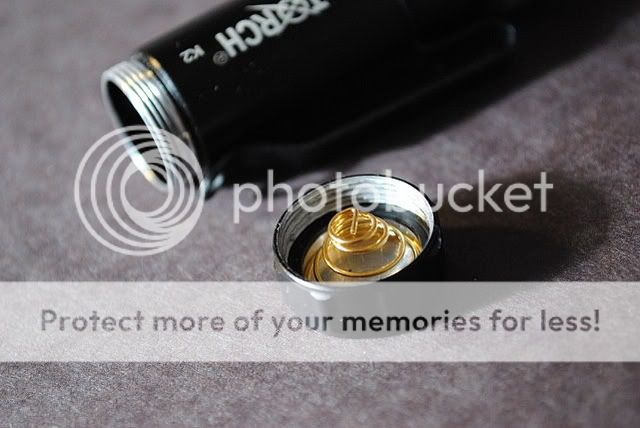
From what I can see there is only one o-ring in the K2. It's located in the tailcap and is fairly recessed. This o-ring is flattened out and seems like it was made specifically for just this model flashlight. If in future it needs to be changed, it seems like this old one might be somewhat difficult to take out. I was surprised to not find an o-ring where the head unscrews from the body of the flashlight. When the light is unscrewed in order to turn it on, the threads become exposed and there is no o-ring visible. I believe water would be able to make its way in through this opening. This would not really be an issue if the head were able to be completely screwed off the body, making insertion of an o-ring simple, but in the K2 the head does not unscrew completely. Therefore there is really no way of placing an o-ring here. Other flashlights also tend to have an o-ring just underneath the lens, forming a seal with the reflector. The K2 also does not appear to have an o-ring there.
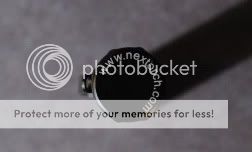
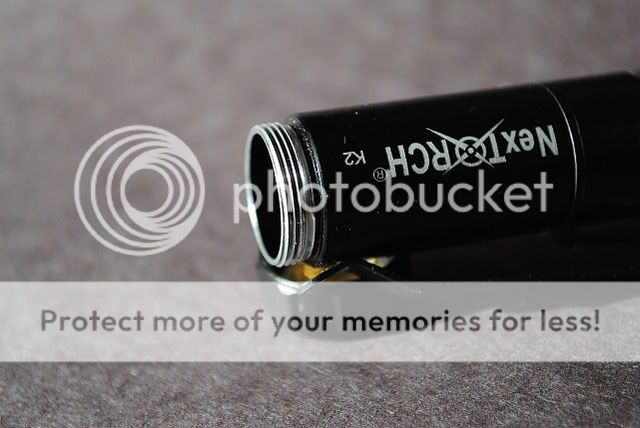
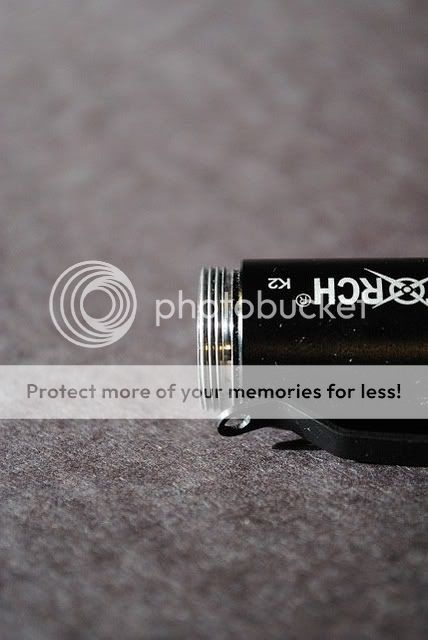
The threads on the K2 are normal threads, not square. Here you can also see the small hole on the tip of the clip where a lanyard or split-ring can be attached.
Battery:
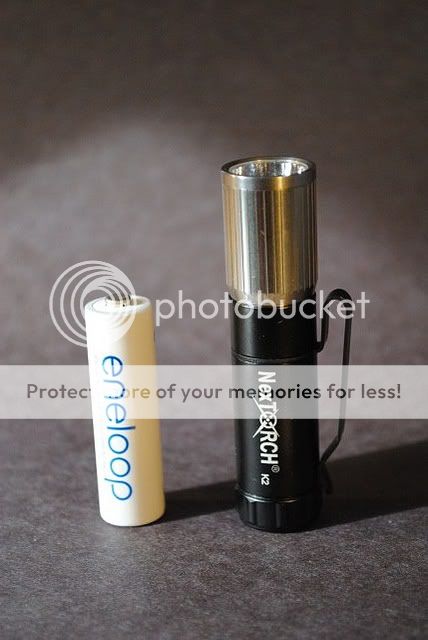
I believe that the 1xAA form factor is very practical and provides the best size-to-power ratio. The battery fits very snugly into the battery tube and there is no battery rattle. As stated previously, the flashlight is the smallest of the 1xAA flashlights I have personally seen in the past. For size comparison purposes, the battery itself is as long as the black portion of the battery tube, while the metallic head containing the LED and reflector is an additional 2.6 cm in length.
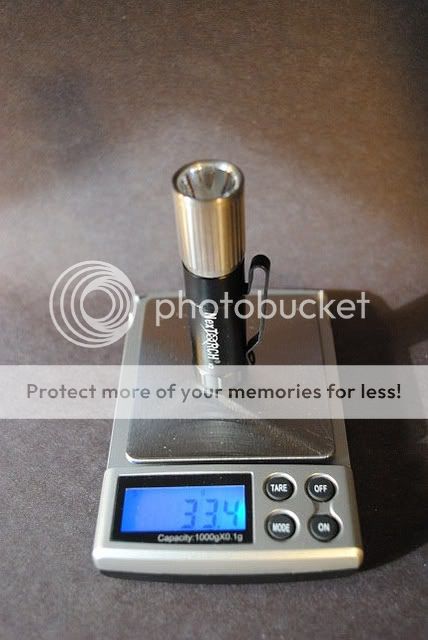
NexTorch advertises the K2 as weighing 32 grams but I got a slightly higher weight of approximately 33.4 grams (without batteries).
NEXTORCH K2 - Review

MANUFACTURER SPECIFICATIONS
SSC-P4 LED (50,000 hour lifespan)
Battery: 1 x AA (NiMH, Alkaline)
Dimensions
-Length: 79 mm
-Diameter: 18 mm
-Weight: 32 grams (excluding batteries)
- Digitally-regulated circuit maintains constant brightness
- Refined Stainless Steel head (303)
- Pocket Clip
- Aerospace grade aluminum (6061-T6)
- Hard Anodized finish
- Patented anti-roll design
- Acrylic lens material
- IPX-7 waterproof

Output Modes (5)
-100%: 65 lumens, 90 minutes
-50%: 30 lumens, 270 minutes
-10%: 7 lumens, 900 minutes
-Low: 4 lumens, 245 hours
-Strobe: 180 minutes
-SOS: 180 minutes
-60 m beam distance
Retail price: $20
Package:
The NexTorch K2 came packaged with a short manual and a Nextorch AA battery. There are no included accessories that come separate from the light as the pocket clip is already attached and there are no holes on the body for the attachment of lanyards. There is, however, a small hole on the tip of the clip which can be used to attach a lanyard if you really need to attach one.



Design and Form Factor:

NexTorch publicizes the K2 as the "smallest single AA flashlight" that is currently available and this is what it's selling point is most likely going to be for most people. It is indeed very small, almost as large as the one AA battery that it uses. It's nearly impossible to verify that this flashlight is the smallest AA flashlight available, but it comes very close in size to the NiteCore EZAA which is slightly longer yet slightly more narrow. The K2 is approximately 79 mm long ( compared to 83mm on the NiteCore) and is 18mm wide (compared to 16.5 mm on the NiteCore). It is much smaller than the comparable 1xAA lights made by Sunwayman, Dereelight, and Fenix.


The aluminum body seems to be good quality and the anodizing as well.
(The clip cannot be removed.)
The entire body of the NexTorch K2 is made from aluminum and it has a very smooth surface. There is no knurling along the body itself, but there are some grooves on the head which are helpful for turning the flashlight on and off (this light is a "twisty" and turns on by rotating the head like a mini-maglite. It does not have a switch, perhaps one of the design requirements for it to be so short in length.)

I would say that the grip on the head of the light is not the best, as my fingers do tend to slip when changing modes and turning the flashlight on and off. It also seems that the threads are fairly stiff between the head and the body. Despite this, I am still able to operate the flashlight easily with the use of 2 hands, although it's not so easy to do so with one. This is because there is not much grip on the head and because the threads, at least on mine, are quite stiff and not easily turned. This may be because they are either too rough or because they don't have enough lubricant.
Head and Reflector:

The head of the K2 is approximately the same diameter as the rest of the body. There is a very slight increase in diameter where the reflector is housed, but this only about 1mm or so. The reflector itself is a very slight orange-peel texture and the light has more throw than I thought it would have for such a small light.

The NexTorch K2 uses an SSC-P4 led which is pure white, providing 65 lumens on its highest mode. The LED is not neutral white, but also would not be described as cool white since it is noticeably warmer than the Q5 emitter on a Fenix L2D. The beam is surprisingly quite focused, with a very distinct hotspot surrounded by an even circle of brightness all the way out to the outer edge of the beam. It is not a flood-type light which seems to be more common in the 1xAA format.

Projected on a white wall, the beam contains no artifacts whatsoever and there are no dark spots in the center even at minimal (10cm) distances.


User Interface:
The user interface of the NexTorch K2 flashlight is very simple to use and to get used to. It is turned on and off by simply rotating the bezel counterclockwise for on, and clockwise for off. (when viewed from below looking up) The modes are changed by quickly turning the light off and then on again. The sequence of the modes is highà mediumàlowàstrobeàSOS. Important to note is that this is the same sequence which the flashlight will always follow. It always turns on at the highest mode and progresses through the different modes the same way each time, in the order described above. Once you reach the SOS mode, the next mode will be high once again and then the sequence is repeated. This is one area of the flashlight which I was slightly disappointed with. While some kind of memory would have been ideal, with the flashlight turning on that same level it was turned off at, for a twisty light I realize this is fairly difficult since there is no switch circuit. Having said this, it would have made much more sense for the flashlight to turn on at the lowest level and progress upwards in brightness. This seems to be the intuitive way of using a flashlight, and makes more sense when one is outdoors and does not want to ruin night-adapted vision. If you are prefer having a flashlight turn on at the highest level then you might consider this a positive, but for my own personal use I prefer low modes first.
On the topic of modes, the low mode on the K2 is rated at 7 lumens which to me is a bit too bright. There has been a tendency with the newest generation of flashlights to include a very low mode, or moonlight mode, which produces about 1 or 2 lumens of output and very long runtimes. A very low mode would have been nice, but once again the mode sequence from bright to low would almost render a moonlight mode useless because by the time you switch down to low mode, your night adapted vision would be affected by the 65 lumen high mode that you had to cycle through.
I also prefer not having blinking modes as I believe they are more of a hassle than a survival tool. I understand why they are still included because they are indeed good at attracting attention, but in normal day-to-day operation these modes are not used. It would therefore be nice if these modes were in another "hidden" menu so that I did not have to cycle through them when attempting to switch brightness.
O-rings:

From what I can see there is only one o-ring in the K2. It's located in the tailcap and is fairly recessed. This o-ring is flattened out and seems like it was made specifically for just this model flashlight. If in future it needs to be changed, it seems like this old one might be somewhat difficult to take out. I was surprised to not find an o-ring where the head unscrews from the body of the flashlight. When the light is unscrewed in order to turn it on, the threads become exposed and there is no o-ring visible. I believe water would be able to make its way in through this opening. This would not really be an issue if the head were able to be completely screwed off the body, making insertion of an o-ring simple, but in the K2 the head does not unscrew completely. Therefore there is really no way of placing an o-ring here. Other flashlights also tend to have an o-ring just underneath the lens, forming a seal with the reflector. The K2 also does not appear to have an o-ring there.



The threads on the K2 are normal threads, not square. Here you can also see the small hole on the tip of the clip where a lanyard or split-ring can be attached.
Battery:

I believe that the 1xAA form factor is very practical and provides the best size-to-power ratio. The battery fits very snugly into the battery tube and there is no battery rattle. As stated previously, the flashlight is the smallest of the 1xAA flashlights I have personally seen in the past. For size comparison purposes, the battery itself is as long as the black portion of the battery tube, while the metallic head containing the LED and reflector is an additional 2.6 cm in length.

NexTorch advertises the K2 as weighing 32 grams but I got a slightly higher weight of approximately 33.4 grams (without batteries).


